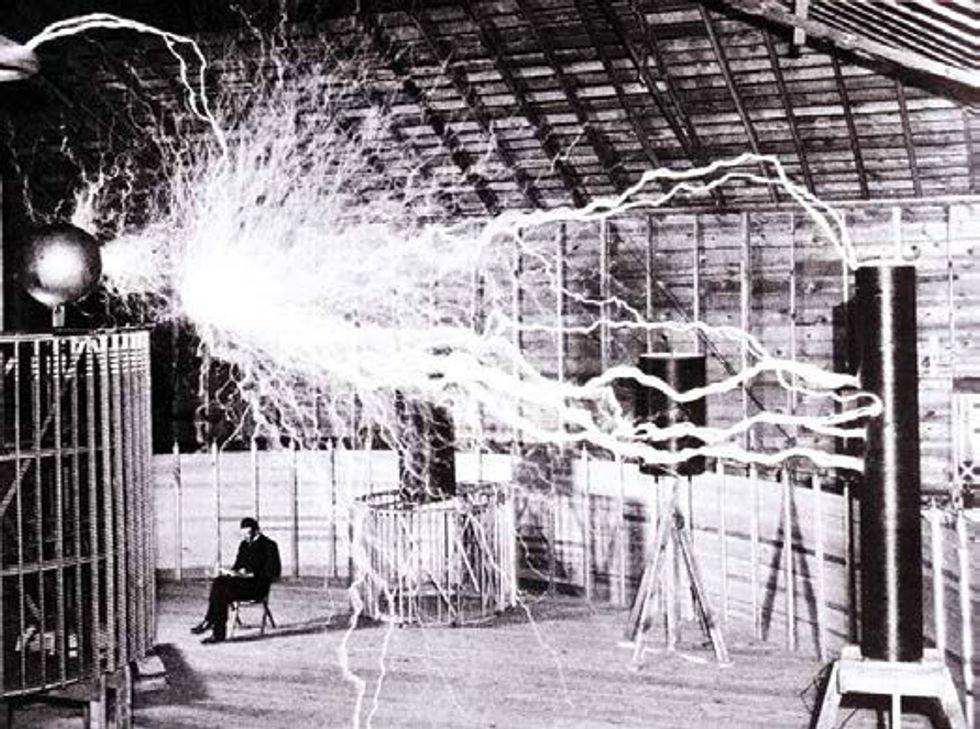I’m a firm believer that the second you stop experimenting marks the beginning of a countdown to doom—the doom of predictability, rote expression, and stagnancy.

I’m not afraid to admit it—I sometimes do stupid stuff. And yeah, in my mind’s ear I can hear people who know me well laughing about how that’s an early contender for understatement of the year. To clarify: I’m talking about lameness as a guitar freak, not just in regular, everyday life as a husband, dad, editor, etc.
But I’m also not afraid to experiment—both in what and how I play as a guitarist, and in what I listen to. I’ve shared a lot of my experiments as a player with you here over the years. I’ve talked about experiments in pedal purging, and amp adventures and lamentations. I’ve confided about fingernail polish wearing. I’ve told all-too-true tales of teenage stupidity—from spilling water from a lo-fi “fog machine” (a bowl of water with dry ice in it) into a distortion pedal, to running a metalhead rack unit into a Roland Jazz Chorus amp.
And yet, I’m not embarrassed about any of it. I’m a firm believer that the second you stop experimenting marks the beginning of a countdown to doom—the doom of predictability, rote expression, and stagnancy. In short, the doom of booooooring.
“Experimenting” means different things to different people. For some, it means a relentless search for an SRV-style overdrive with higher fidelity and greater flexibility. To others, it’s wiring your guitar “incorrectly,” using outboard gear that destroys your sound bit by bit, routing your signal chain in a way that tromps all over traditional conceptions of desirable tone, and/or finding a few items in the junk drawer to attach to your strings and/or thwack them with. There’s no right or wrong answer. Most of us are probably somewhere in the middle, though I think leaning toward the weird is often more fun and unique. But it depends what your musical proclivities and purposes are.
Although Nikola Tesla’s experiments with four million volts were pretty rad,
we recommend seeking out any and all aural experiments other than those
that involve arcing electricity or whirring blades.
One imperative when you’re experimenting is being willing to admit when things haven’t turned out as hot as you’d hoped. Or worse, when they’ve gone horribly awry in a way that’s not even close to rad. The other imperative is to not let a disappointing experiment deter you. Most experiments apart from those that involve whirring blades or arcs of lethal voltage are probably worth a go. Chances are, you’ll either discover sounds or songs as good as (or better than) what you’d hoped—or you’ll learn something valuable that helps you to do so when you back away from the botched plan. Continuing my tradition of shameless confessionals, here are some things I’m considering experimenting with or backtracking from.
For the last couple of years, I’ve been playing with the broad side of my 1 mm picks. I liked that it slightly rounded off the brightness of my rig, and I dug that the raised-lettering grip added a raw, gritty texture. Fighting the extra surface area makes it trickier to play fast and clean, but for a while there my inner punk was happy with the trade-off. I liked that it did a little something to my sound that no little stompbox can. I also liked that it was just plain different.
But I’m done with that now. Even though I haven’t been into alternate-picked shredding since my late teens, I’ve gone back to using the pointed end of the pick. I’m not really noticing that much of a tonal difference, but I am digging the cleaner articulation. Maybe some of that sound was in my head all along, or maybe I’ve somehow adapted my playing to still get it. Maybe I’m nuts. But I know the whole experiment was interesting, and I’m certain it improved my articulation and dexterity.
Another backtrack I’m mulling is whether heavier strings really make a difference in tone. I’ve been using .011 sets for the last five years, because I wanted more tautness than .010s seemed to give and I didn’t like the warble that accompanied aggressive attack. Converting required building up muscle and stamina, and it also made more dexterous passages harder to pull off. But the tougher sound was worth it to me. After reading a number of famous PG interviewees defend lighter strings over the last couple of years, I’ve begun to rethink it. In our recent Rig Rundown, Neal Schon became the latest to call Billy Gibbons—proud user of .007s—to the witness stand to help him make the case that you can get the same thick, warm sounds from light strings.
Have I been delusional to think the .011s made a difference all these years? My answer is an emphatic “No.” I submit that there’s a lot more to music and guitar tone than frequencies. There’s texture, contrast, velocity, and the difficult-to-model effects of speedier things snapping against thicker things. I find it silly for those who say everything from string alloys to pick material, body woods, cable capacitance, tube-plate grids, wire cloth, speaker-cone paper, and other esoterics does affect your sound, but string gauge is somehow on a different plane. Puh-lease.
But enough of my so-called experiments. Let’s hear about yours.
Shawn Hammond
shawn@premierguitar.com



